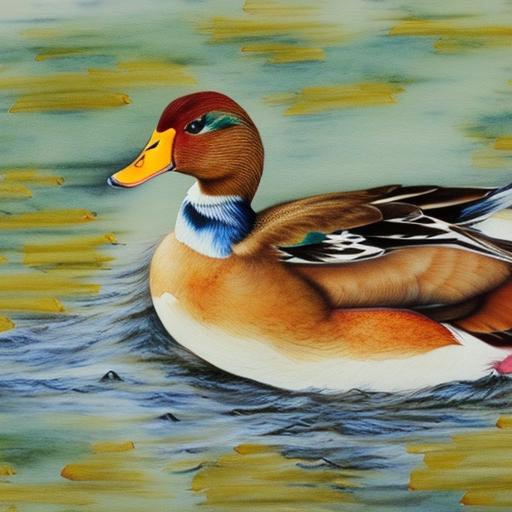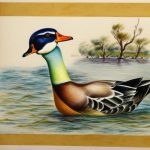Ducks are a diverse group of waterfowl that come in a wide variety of breeds, each with its own unique characteristics and traits. Some of the most popular duck breeds include the Pekin, Mallard, Muscovy, and Khaki Campbell. Each breed has been selectively bred for specific purposes, such as meat production, egg laying, or ornamental purposes. Pekin ducks, for example, are known for their large size and rapid growth, making them a popular choice for meat production. Mallard ducks, on the other hand, are a wild breed that is often kept for ornamental purposes or for hunting. Muscovy ducks are known for their unique appearance and are often kept for both meat and ornamental purposes. Khaki Campbell ducks are prized for their prolific egg laying abilities, making them a popular choice for backyard egg production.
Key Takeaways
- There are many different breeds of ducks, each with unique characteristics and traits.
- Ducks exhibit complex reproductive behaviors, including courtship displays and mate selection.
- Different duck breeds can mate and produce offspring, but there are factors that can affect the success of cross-breeding.
- Factors such as genetic compatibility and physical size can impact the ability of different duck breeds to successfully mate.
- Cross-breeding can result in a wide variety of potential offspring, each with a unique combination of traits from the parent breeds.
Reproductive Behavior of Ducks
Ducks are known for their complex and fascinating reproductive behavior. During the breeding season, male ducks will often engage in elaborate displays to attract females. These displays can include vocalizations, head bobbing, and wing flapping. Once a male has attracted a female, the pair will engage in a courtship ritual that can involve preening, head bobbing, and synchronized swimming. Once the female is ready to mate, the male will mount her from behind and copulation will occur. After mating, the female will begin to search for a suitable nesting site where she will lay her eggs. Once the eggs are laid, the female will incubate them for around 28 days until they hatch.
Can Different Duck Breeds Mate?
One common question that arises when it comes to duck breeding is whether different duck breeds can mate with each other. The answer is yes, in most cases, different duck breeds can mate with each other. However, there are some factors that can affect the success of cross-breeding between different duck breeds. These factors can include differences in size, temperament, and mating behavior between the different breeds. In some cases, these differences can make it difficult for certain breeds to successfully mate with each other. However, with careful management and observation, it is possible for different duck breeds to successfully mate and produce offspring.
Factors Affecting Cross-Breeding
There are several factors that can affect the success of cross-breeding between different duck breeds. One of the most important factors is size. Ducks come in a wide range of sizes, from small bantam breeds to large meat breeds. When attempting to cross-breed different duck breeds, it is important to consider the size difference between the breeds. In some cases, a large male duck may be too heavy to successfully mate with a smaller female duck, leading to potential injury or unsuccessful mating. Another factor that can affect cross-breeding success is temperament. Some duck breeds can be more aggressive or dominant than others, which can lead to conflicts during mating attempts. Additionally, differences in mating behavior between different duck breeds can also affect cross-breeding success. Some breeds may have different courtship rituals or mating preferences that can make it difficult for them to successfully mate with other breeds.
Potential Offspring of Cross-Breeding
When different duck breeds successfully mate, they can produce offspring that exhibit a wide range of characteristics. These offspring are known as hybrids and can inherit traits from both parent breeds. For example, if a Pekin duck mates with a Mallard duck, the resulting offspring may exhibit a combination of traits from both breeds, such as a larger size from the Pekin and unique coloration from the Mallard. Hybrids can also inherit traits such as egg laying ability, temperament, and foraging behavior from their parent breeds. In some cases, hybrid offspring may exhibit hybrid vigor, which can result in increased growth rates, disease resistance, and overall health.
Implications for Duck Breeding and Conservation

The ability for different duck breeds to successfully mate and produce hybrid offspring has important implications for both duck breeding and conservation efforts. Cross-breeding can be used as a tool to introduce new traits or characteristics into existing duck populations. For example, if a certain breed of duck is known for its prolific egg laying abilities but lacks disease resistance, it may be beneficial to cross-breed it with a breed that exhibits strong disease resistance in order to create a more resilient population. Additionally, cross-breeding can be used as a conservation tool to help preserve rare or endangered duck breeds. By introducing genetic diversity from other breeds, it is possible to strengthen the overall health and resilience of these populations.
Conclusion and Future Research
In conclusion, the ability for different duck breeds to mate and produce hybrid offspring has important implications for both duck breeding and conservation efforts. While there are factors that can affect the success of cross-breeding between different duck breeds, with careful management and observation it is possible for different breeds to successfully mate and produce offspring. The resulting hybrids can exhibit a wide range of characteristics inherited from both parent breeds and can be used to introduce new traits into existing populations or strengthen the genetic diversity of rare or endangered breeds.
In the future, further research into the reproductive behavior of different duck breeds and the factors affecting cross-breeding success could help to improve our understanding of how to effectively manage and utilize cross-breeding in duck breeding programs. Additionally, continued efforts to conserve and preserve rare or endangered duck breeds through cross-breeding and genetic diversity initiatives will be crucial in ensuring the long-term health and resilience of these populations. Overall, the study of cross-breeding in ducks has the potential to greatly benefit both duck breeding programs and conservation efforts for years to come.
If you’re interested in learning more about duck breeds and their mating habits, you might also want to check out this informative article on Poultry Wizard about the different factors that can affect the mating behavior of ducks. Understanding the mating habits of different duck breeds can be essential for anyone considering raising ducks. For more insights into poultry care and coop ideas, you can also explore their articles on large chicken coop ideas and garden chicken coop. Additionally, if you’re curious about what to feed your ducks, their article on what to feed ducks provides valuable information on this topic.
FAQs
Can different duck breeds mate?
Yes, different duck breeds can mate with each other. However, the resulting offspring may not always be viable or may not exhibit the desired traits of either parent breed.
What are some examples of different duck breeds that can mate?
Examples of different duck breeds that can mate include Mallards, Pekins, Rouens, Khaki Campbells, and Muscovies.
What are the potential outcomes of mating different duck breeds?
The potential outcomes of mating different duck breeds include hybrid offspring that may exhibit a combination of traits from both parent breeds. However, the resulting offspring may also be infertile or may not meet breed standards.
Are there any concerns with mating different duck breeds?
One concern with mating different duck breeds is the potential for genetic dilution of purebred lines. Additionally, there may be health and fertility issues with hybrid offspring.
Can different duck breeds be crossed to create new breeds?
Yes, different duck breeds can be crossed to create new breeds. This is a common practice in poultry breeding to develop new traits or improve existing ones.
Meet Walter, the feathered-friend fanatic of Florida! Nestled in the sunshine state, Walter struts through life with his feathered companions, clucking his way to happiness. With a coop that’s fancier than a five-star hotel, he’s the Don Juan of the chicken world. When he’s not teaching his hens to do the cha-cha, you’ll find him in a heated debate with his prized rooster, Sir Clucks-a-Lot. Walter’s poultry passion is no yolk; he’s the sunny-side-up guy you never knew you needed in your flock of friends!







